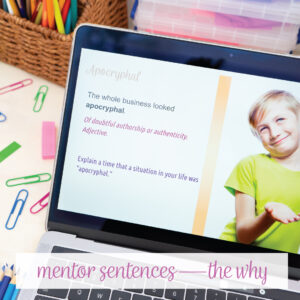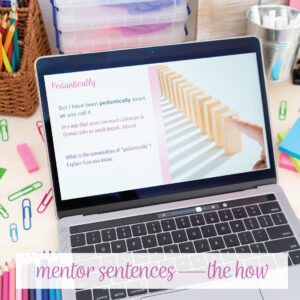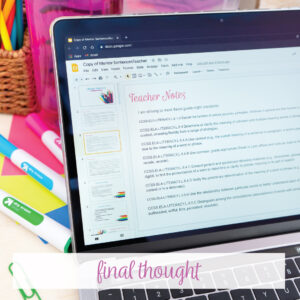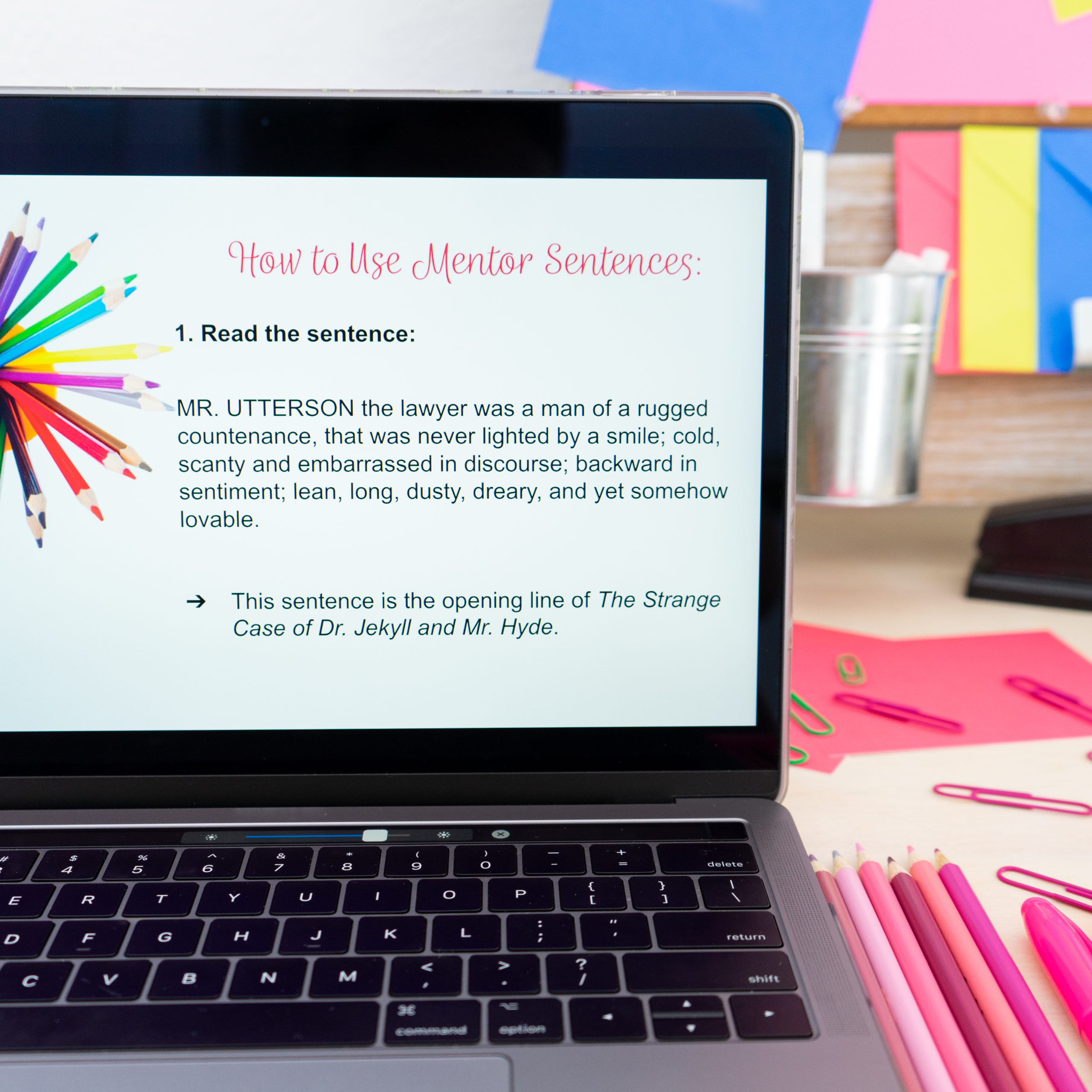‘Connecting Grammar and Literature’ is part six of a ten-part series covering grammar in middle school and high school English classes. Start with part one and follow the links to the other articles in the series.
Previously, I wrote about ways to connect grammar and writing for students. That may seem like the obvious step after direct grammar instruction—to connect the grammatical concepts to student writing.
Connect reading and grammar too! Teaching grammar through reading is an easy step in your grammar instruction. When students understand how words work in various ways, grammar lessons will be successful.
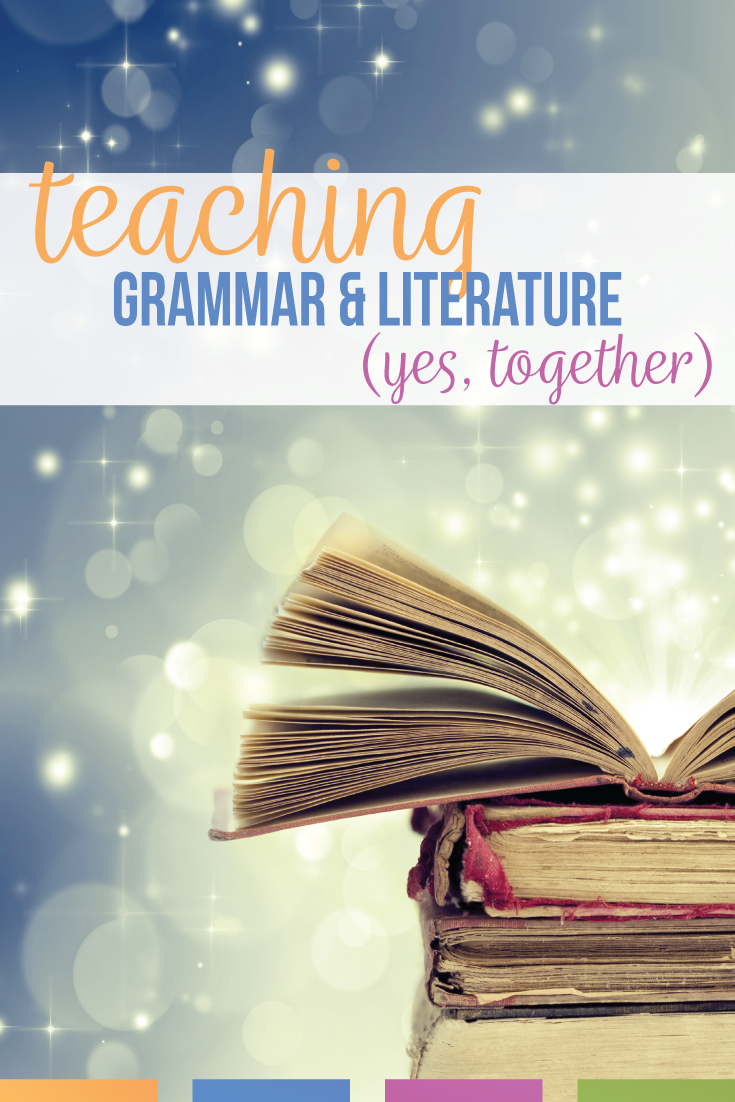
The easiest way to tie grammar through literature is with mentor sentences.
For years, I didn’t have a name for mentor sentences. I pulled sentences from literature and studied those sentences regarding writing approaches, grammatical concepts, and on. Students and I discussed changing sentences—what would the effect be on the story? Why did the author write a fragment? Why was the subject simply implied and not written?
I was using mentor sentences and didn’t realize it.
“Mentor sentences” seems to be an umbrella term for pulling strong sentences from literature and nonfiction and studying them. What I’ve learned from teaching grammar through literature is that you don’t need a preplanned lesson. As you explore literature, pull examples from your reading and discuss the sentences with language in mind. (If you are nervous about this process, I understand. My biggest piece of advice is to move slowly and in time, you will naturally choose sentences.)
You can find mentor sentences in any reading material. I don’t typically pull sentences and teach them in isolation. Instead, I pull sentences from what we are currently studying in class.*
Mentor sentences help me teach grammar. Teaching grammar through literature has greatly build my grammar lessons and provided me an alternative approach to meeting language standards. Here are ideas for using mentor sentences to connect grammar and literature.
Mentor Sentences—the why
To begin, the benefits of mentor sentences are huge!
First, students see the direct connection to what a famous or well-known author creates and the grammar they study in class. Sometimes, students start to see a pattern in online sentence practice. For instance, when I teach parts of a sentence, I provide mentor sentences so that students see a variety of subjects and verbs in literature.
Second, the sentences are excellent! They are model, or ‘mentor’ sentences. They are examples of writing we could follow. Aside from identifying components, we can ask students what the effect is of certain use from literature.
Finally, mentor sentences create less work for teachers. Teachers don’t have to invent sentences to analyze or study. Any piece of literature works,
I have used mentor sentences with all levels of students. When I teach noun lessons, I use picture books. We make a quick chart of nouns from the picture book. Doing so sets the expectation that we will connect grammar and literature. Since teachers can differentiate on the spot (or in advance!) with mentor sentences, the freedom allows me to reach students.
Mentor Sentences—the how
First, connecting grammar and literature can happen in several ways.
- Pull sentences beforehand. This allows the teacher to be prepared. Students can have a printout or digital copy. This is teacher-directed.
- Analyze sentences as you read or review. This is student-directed, with teacher input.
- Look at the components of a sentence while studying a vocabulary word.
Second, after having the mentor sentences, work to connect the literature to grammar. Ask higher leveled questions, such as:
- Why is the author using passive voice?
- What is the effect of using a fragment or a run-on? Why can the author get away with ‘incorrect’ sentence structure?
- Contrast the narrator’s language style to a character’s language (types of sentences, abundance of a certain phrases, simplistic verbs).
- What would be the effect if the author had done ___ instead of ___?
- Locate the current grammar concept taught (part of speech, verbal), and find it in the literature.
The possibilities are endless! Once you start teaching grammar through reading lessons, you’ll see growth in both areas.
Final Thought
Finally, a tip while connecting grammar and literature: Show students your thought process. Model how you think about a sentence. Even if you make an error (at first mistake an adverb for a preposition), explain why that happened and how you double check your word to catch the error.
Overall as I’ve used mentor sentences to strengthen students’ understanding of grammar, their interest in the literature has grown. Additionally, some students prefer to analyze literature and nonfiction by looking at the language.
Looking to integrate grammar into every component of an ELA class? Reach students and teach those higher thinking skills by connecting grammar and literature.
*As a caveat, if I’m looking for strong sentences from a text and we are not currently reading a story, I find mentor sentences with a story that many students have read, like Little Women, which is also online for free. Students can read that text and find the grammar in context.
Ready to read part seven in the series? Connecting grammar and vocabulary is next.
Lastly, are you interested in more ways of teaching grammar through literature? Check out Grammar Gurus, a private Facebook group. Teachers discuss teaching grammar through reading, writing, and so much more!


